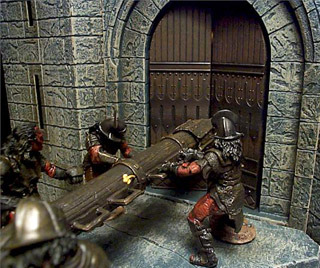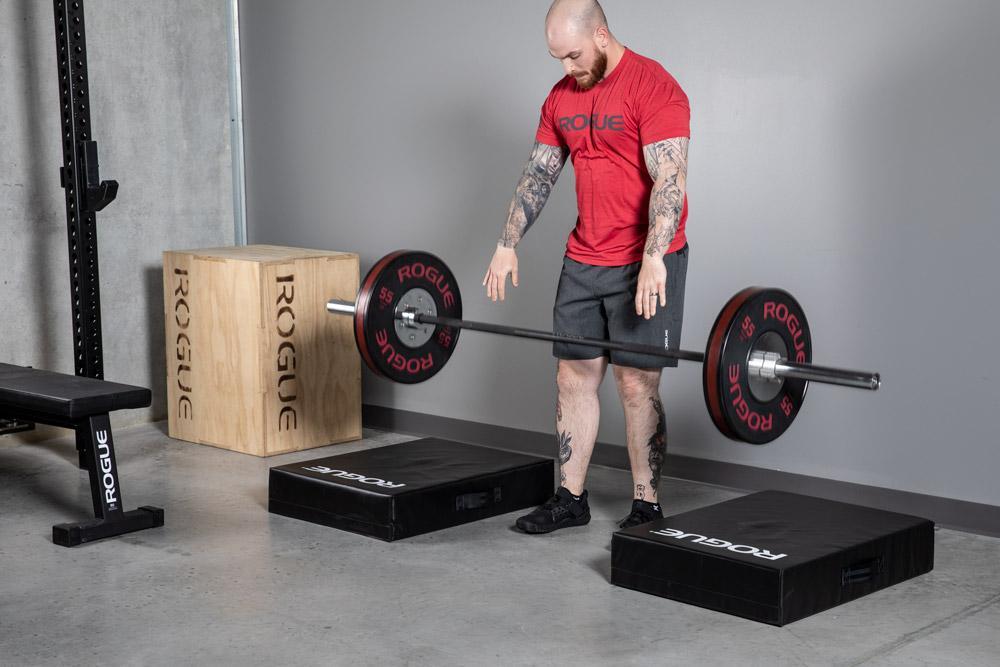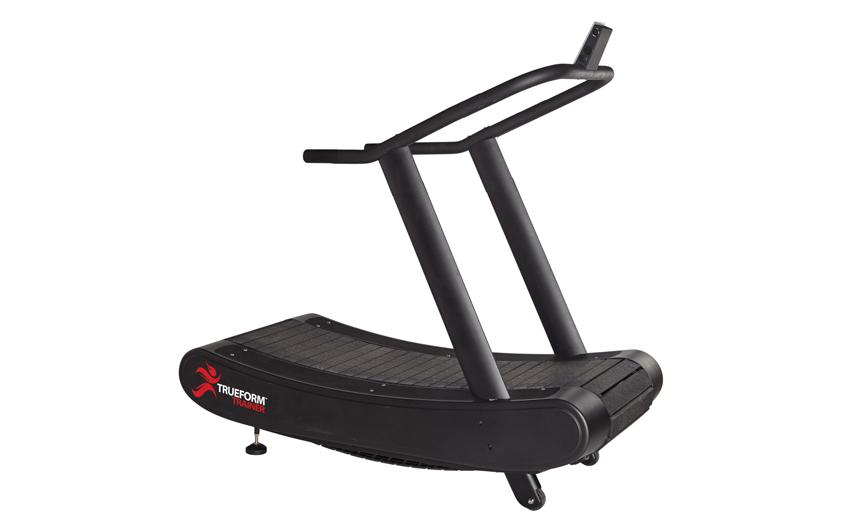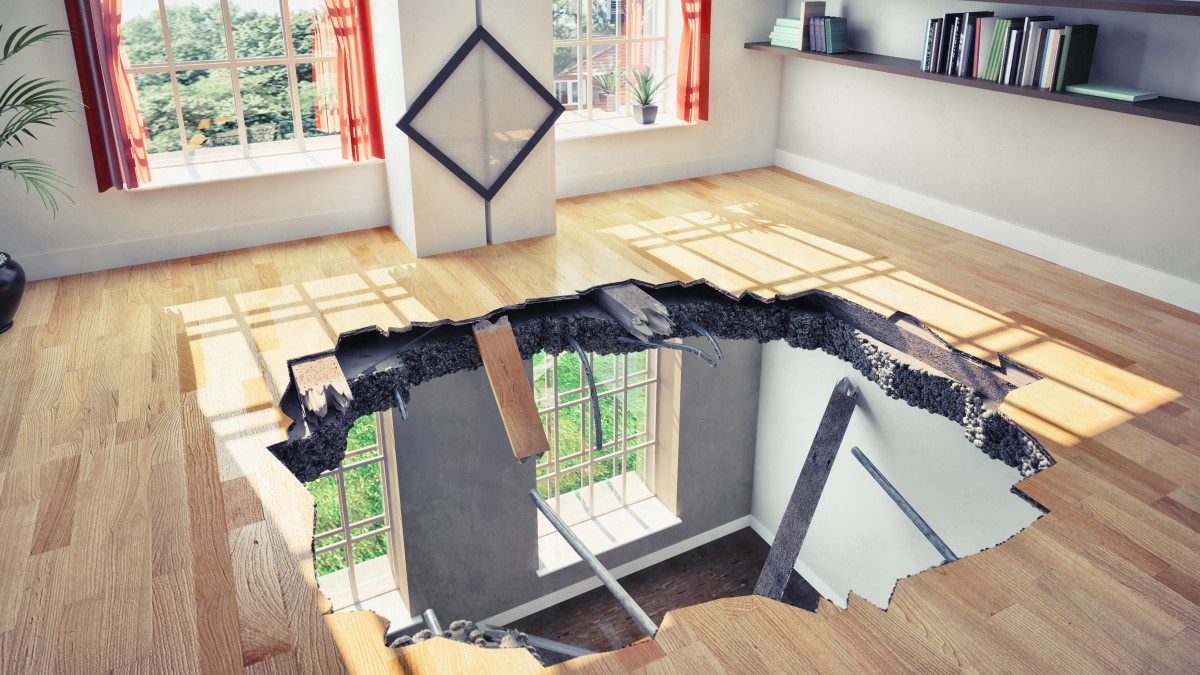A gym at home is super convenient, but some of us don’t have room in the basement, garage, or first floor, or we’re stuck in an apartment building. It’s this situation where you have to consider whether your upstairs or second+ story floor can support your gym safely.
Table of Contents
Structural Integrity of the Floor
In the US, residential building codes require that every bedroom support 30 pounds per square foot (psf), and other rooms support 40 psf.
However, it’s ok if you exceed that for a portion of the floor. Each square foot doesn’t have to individually be limited to 40 lbs.
Think of it this way. Would you be afraid to find two 300-lb people standing very close together in that room? It’s disturbing that they snuck into your home and you caught them, but your sense is that you wouldn’t have to worry about the structural integrity of the floor, right?

Modern construction standards require that you can fill a room by loading each square foot to 40 lbs. That also doesn’t mean each square foot can only take 40 lbs. If some portion of the floor is bare, you can still stack hundreds of pounds in one place, and the floor joists will distribute the load somewhat.
So back to gym equipment. For a gym involving weights I recommend putting down 3/4″ plywood, followed by 3/8″ to 3/4″ rubber mats (the thicker the better, but 3/8″ is fine if you aren’t dropping anything). The plywood spreads the load across multiple joists and serves as a good sturdy base layer over carpet if need be. The dense rubber spreads the load a little more, provides good traction, a slight amount of give, and it prevents a dropped weight from punching through the plywood.
Think of all the large bookcases and hot tubs on second floors. Bookcases are generally against a wall where there’s more floor support, and that helps a lot. But still, if some of the room isn’t holding much or any weight already, your joists can take more weight.
Often you can get away with up to 1500 lbs of gym equipment that does not involve any shock loads. There are probably some exceptions where you need to be more careful. I’m not a builder and don’t know much about it. But if we’re going to pick a number, that’s as good as any.
I recommend you get a professional (a structural engineer, ideally) to check things out and give you better advice than that arbitrary number. He can check out the spacing and size of the joists, and heck, maybe in an apartment building you’ll be lucky enough to be right over a steel I-beam. Or you’ll be unlucky enough to be in an old home that doesn’t meet current codes and barely can hold your weight, but at least fortunate enough to have learned that before you break through it.
If you’re dropping the barbell at all, the shock load goes way beyond its total weight, and you could run into trouble. We’ll get into that below.
Weights and Power Racks
Let’s look at a power rack / squat rack, olympic weights, and bench. I’ll give specific numbers here, and then you’ll see that the other types of equipment below will be even less of an issue.
An entry level power rack has about a 4’x4′ footprint.
Let’s say you’re a 200 lb guy and you bench press 200 lbs on a light duty rack.
A 130lb rack + 200lb person + 200lbs of weights + 100lb bench = 630 lbs.
Divide 635 lb / 16 sqft and you’re at 39 psf. Sounds dangerously close to the 40 psf max, right?
Well, as we discussed above, this is spread out by the floor joists, and hopefully by your rubber over plywood flooring. So even if you add a little “shock load” factor as you drop the weights on the rack, the rack base spreads that out, as does your rubber flooring. The weights hitting the floor directly is very different (see deadlifting below).
Another example: The popular Rogue RML-390F power rack weights about 300 lbs, you’re a bigger guy at 250 lbs, and you’re squatting 300 lbs. That totals . The footprint is 4’x4′. Do the math and you get 53 psf. Again, considering your flooring is spreading the load out, you’re effectively still within the 40 psf guideline. If you drop the weight on the rack pretty hard, that number goes up somewhat, but the numbers will be vastly different depending on how hard we’re talking about. At these levels, you’re probably okay but you’re getting into dangerous territory if you’re really rough with those heavy squats.
Deadlifting
Short answer: You can do it if you take certain precautions, but you’re going to scare the hell out of your downstairs neighbor.

If you can always set it down gently you’ll be fine. But I’m not going to be the jerk that tells you to lift lighter weight for more reps so you can set the bar down gently. Deadlifts are your opportunity to do just a few reps with as much weight as humanly possible.

For setting a deadlift down hard, or even dropping it a couple feet, your best bet is sturdy crash pads. These are known to work effectively without sinking too much under the weight. Put down a stack of plywood and/or rubber tiles between them to get your feet level with them, basically making yourself a little lifting platform.
They absorb impact so well that you can probably even drop light cleans or snatches with them. You can experiment and get a feel for what a reasonable limit is.
Cardio Equipment
An elliptical or any kind of indoor bike or rower is not going to cause damage. It’s not that heavy, not that noisy, and you aren’t creating any shock loads whatsoever, which is really where the danger lies in other equipment.
A treadmill will shake the floor and over time may cause some kind of damage or loosening of joints, assuming you’re running and not using it to walk while reading a book to clock in your fake workout time.

The modern curved-deck style of treadmill reduces foot pounding significantly. That isn’t really the point of the design, but it’s an effect of the the way you run on these and the way your feet don’t have as far to fall as you step forward.
Home Gym Weight Machines
Weight machines are not much of an issue, even if it’s the freeweight loaded type where you have a lot of weight plates sitting around. The machines don’t add much shock load even when you lower the weight arm or cable heavily. It’s not going to damage anything.
Preventing Noise
I have avoided talking much here about the noise factor of all these types of equipment. That’s a whole different post and has more to do with keeping your neighbors and housemates happy than worrying about damage to your floor.
See my separate post on the topic of how to work out in an apartment without making a racket.

